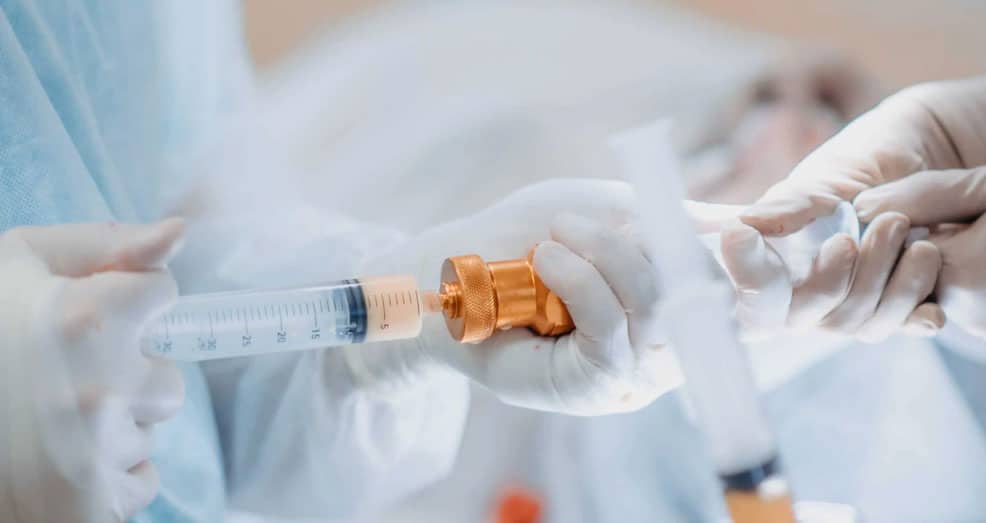2020 statistics according to the American Society of Plastic Surgeons show that Breast Augmentation continues to be one of the top 5 Cosmetic Surgical procedures and has been since 2006. According to the data, of the breast implants used in 2020, 84% were silicone implants while 16% were saline implants.
Breast Augmentation is a Cosmetic Surgical procedure that enhances the breast size and structure by placing implants under the breast tissue or chest muscles. This procedure can restore breast volume lost after pregnancy or weight loss, improve natural breast size asymmetry, or achieve a more rounded breast shape.
However, some women desire to undergo breast augmentation but are reserved due to the post-surgical scarring. This is because during a standard breast augmentation the Plastic Surgeon creates the incision either within the crease beneath the breast or around the nipple. Due to the location of the incisions, the post-surgical scar will fade in time but it will still be visible.
It is because of these reasons that at Al Shunnar Plastic Surgery Dubai we are also offering Endoscopic Breast Augmentation when necessary. This is an advanced surgical technique where the Plastic Surgeon uses an endoscope (a high-definition tiny camera) to help improve visualization inside a patient’s body. This ensures that the incisions created are more discreet.
What is Endoscopic Breast Augmentation?
During Endoscopic Breast Augmentation in Dubai, a Plastic Surgeon makes a very small incision where he or she inserts the endoscope and surgical instruments.
Endoscopic breast augmentation is classified based on where the incision is placed. There are two types:
- This involves placing the incision in the axilla or armpit.
- This employs the incision in the navel area.
Both of these techniques offer great results but our Board-Certified Plastic Surgeons at Al Shunnar Plastic Surgery Dubai prefer Transaxillary breast augmentation because it is considered safer and offers more consistent results.
Benefits of Endoscopic Breast Augmentation
The endoscopic approach to breast augmentation has several benefits, which include:
- No unsightly scars
- Natural-looking breast enhancement
- Nerves and milk ducts remain intact
Good Candidate for Endoscopic Breast Augmentation
The ideal candidate is a woman who is also a good candidate for standard breast augmentation. This is someone who is in good health, has reasonable expectations of the outcome, and understands the potential risks and complications that might occur.
Women with extremely saggy breasts (ptosis) do not make good candidates as they also require a breast lift which will involve scars on the breasts. Similarly, women with breast deformation or malformation are excluded as they benefit more from traditional breast augmentation.
The best person to advise you on this is your Plastic Surgeon during your consultation.
Pre-op Consultation
During the consultation with your Plastic Surgeon, you will discuss your goals for the procedure including breast size and shape preferences. Your medical history will be reviewed and your breasts examined.
A preoperative ultrasound and mammogram may also be performed depending on your age.
Once you have been cleared for surgery, your Plastic Surgeon will take you through the endoscopic breast augmentation procedure, the benefits, and also the potential risks and complications. You will be asked to avoid tobacco for a few weeks before and after the procedure. You will also be asked to stop taking aspirin and certain anti-inflammatory drugs.
The Surgery
Usually general anesthesia is used during endoscopic breast augmentation.
During the procedure, your Plastic Surgeon will create an incision that is about 4cm long under each armpit. This is done along the skin fold of the armpit which will make the resultant scar well hidden.
The Plastic Surgeon then inserts an electrical scalpel and endoscopic camera into the incision. The images are magnified hence the Plastic Surgeon can identify anatomic structures and work with precision.
The breast tissue is separated from the chest muscles and the implant, creating a pocket either in front or behind the outermost muscle of the chest (pectoral muscle). The implant is inserted into this pocket and centered behind the nipple.
Saline implants are inserted empty and once in place, they are filled with sterile saltwater. Silicone implants on the other hand come pre-filled with silicone gel.
When the implants are in place and the Plastic Surgeon is satisfied with the outcome, the incisions are closed with absorbable sutures. The sutures are then covered with a small dressing that is water repellant.
After the procedure
Following the procedure, you may feel some soreness and swelling for a few weeks. Pain medication will be prescribed to control the post-operative pain. You will be required to wear a compression bandage or sports bra during the healing process.
Strenuous activities should be avoided for a couple of weeks but you can resume other normal activities within a week.
Possible Risks
All surgeries carry some degree of risks and with endoscopic breast augmentation they are rare, but the most common include:
- Infection
- Bleeding
- Capsular contracture
- Nerve damage and
- Unsatisfying aesthetic results
Your Plastic Surgeon will take you through all the possible risks and tell you what to look out for during your recovery.
To Know More
Would you like to understand what options are available for Endoscopic Breast Augmentation in Dubai? Meet one of our experts at Al Shunnar Plastic Surgery for a personal consultation to develop a tailor-made plan for you. Contact us or book an appointment and our patient care coordinators will identify the most suitable expert for you.



